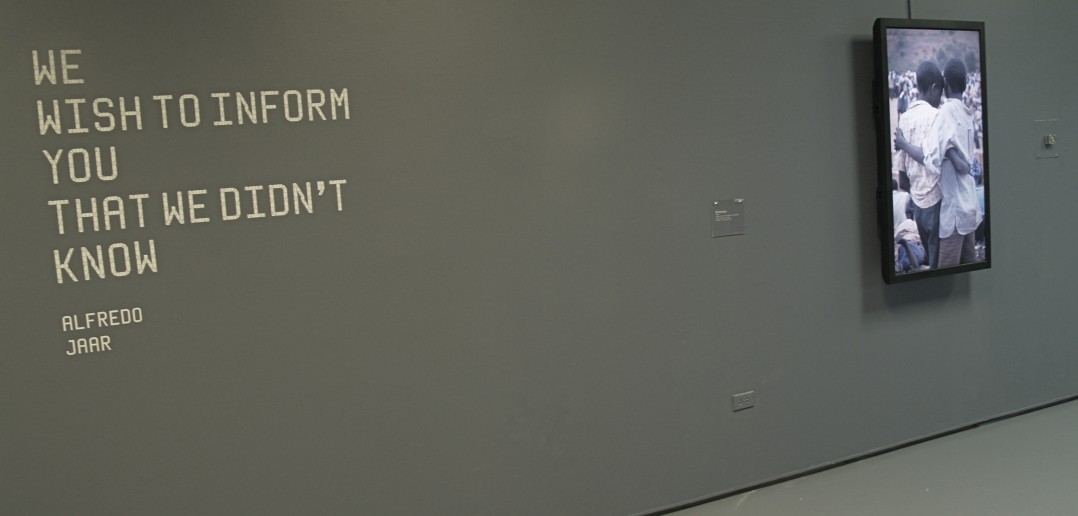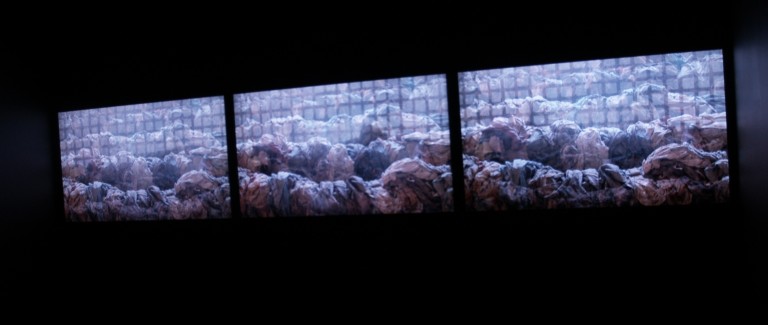
March 24, 2010 – April 22, 2010
A roundtable discussion concerning memorials and state terrorism, with discussion between artists Alfredo Jaar and Marcelo Brodsky, moderated by University of Connecticut Professor Robin Adele Greeley. Co-sponsored by The Dodd Center’s Human Rights Initiative, Human Rights Institute, Foundations of Humanitarianism Program, Center for Latin American and Caribbean Studies and Contemporary Art Galleries.
Alfredo Jaar created The Rwanda Project, 1994-2000 as a response to the criminal indifference of the world community in the face of a genocide that claimed one million lives. This project lasted six years and included 25 different works that the artist considers “essays of representation.”
In 2008, eight years later, the artist returned to Rwanda, having been invited to create a monument to the victims of the genocide. Jaar visited hundreds of existing memorials in order to start the design process. He accumulated new visual materials that are at the origin of this new work, a three-channel video about Rwanda sixteen years later. This piece, We wish to inform you that we didn’t know, provides both closure for the artist’s work in Rwanda, and expresses continued outrage at the brutal genocide that could have been prevented.
Born in 1956 in Santiago, Chile, Jaar is a resident of New York City, and is an internationally acclaimed artist. Trained as an architect and filmmaker, Jaar’s provocative art installations and public interventions focus on human rights and contemporary socio-economic issues. This school year, he has been visiting the Storrs campus to research, lecture and mentor. Jaar is the University of Connecticut’s School of Fine Arts’ 2010 Raymond and Beverly Sackler Artist-in-Residence.
Known for making intellectually challenging and poetic work, Jaar uses art as a means to articulate social concerns and the relationship between ethics and aesthetics. Utilizing imagery appropriated from mass media, and employing a range of media, Jaar’s art cannot be associated with a particular medium. Unlike most artists, he chooses his subject and location first and then selects the media best suited to his message. Jaar’s goal is to create spaces that can both enlighten and promote changes in cultural attitudes. His work is a response to contemporary tragedies and the ways they have been ignored or ineffectively reported. Since the 1980s, he has strategically been revealing the public’s desensitization to images of events such as genocides, epidemics, and famines.
Jaar has received many awards, including a John D. and Catherine T. MacArthur Foundation Award; a Louis Comfort Tiffany Foundation Award; and fellowships from the National Endowment for the Arts; the John Simon Guggenheim Memorial Foundation and Spain’s Premio Extremadura a la Creación. His art has been featured in the biennials of Venice, São Paolo, Istanbul Kwangju, Johnannesburg and Seville. It has also been showcased at Documenta in Kassel. Jaar’s politically motivated sculptures, installations and public interventions have been presented worldwide and he is represented in collections at the Art Institute of Chicago, Hirshhorn Museum and Sculpture Garden, The Israel Museum, Los Angeles County Museum of Art, Musee Cantonal des Beaux-Arts, Musée National d’Art Moderne, Centre Georges Pompidou, and The Museum of Modern Art.
Featured Artists
Alfredo Jaar


